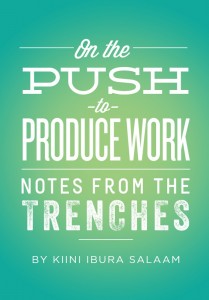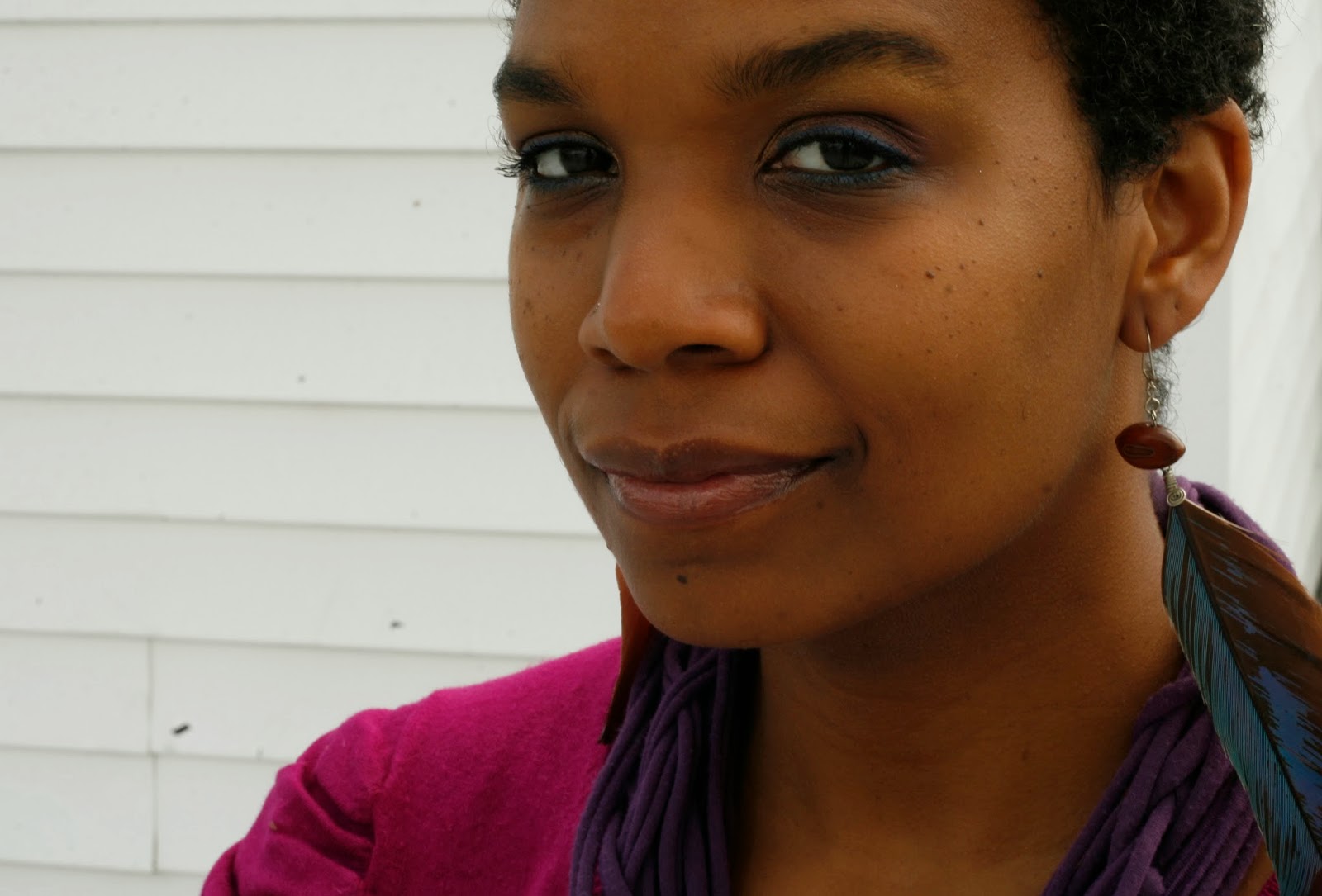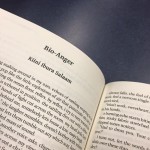From On the Push to Produce Work by Kiini Ibura Salaam.
As a writer, are you willing to invest the time and effort to produce the amount of work required to learn what it takes to be productive?
 I had already been a writer for ten years before I heard someone say that you might have to write a few failed novels to develop your craft. It was Jack Womack—novelist extraordinaire—who told my 2001 Clarion West cohort that we might have to throw out our first novels. He went on to say, that you might have to trash your second and third novels as well. But each novel you write, each book-length work you produce, teaches you about the craft, and by your fourth novel, you should know what you are doing.
I had already been a writer for ten years before I heard someone say that you might have to write a few failed novels to develop your craft. It was Jack Womack—novelist extraordinaire—who told my 2001 Clarion West cohort that we might have to throw out our first novels. He went on to say, that you might have to trash your second and third novels as well. But each novel you write, each book-length work you produce, teaches you about the craft, and by your fourth novel, you should know what you are doing.
When I was writing my first novel, I thought I was creating a publishable product. Editors and agents who read the manuscript were enthusiastic about the writing, but clear about the structural flaws. The fact was, the 400-plus pages was shopping around to agents and editors was actually a rambling series of stories that were loosely sewn together by a multigenerational through-line that was not revealed until the end of the novel. There was no plotline, no consistent arc, nothing holding the novel together to unify it as a whole. I labored for years working on that novel because I fervently believed that it would be the next step in my career. What it turned out to be, however, was my very own one-woman novel-writing workshop.
The notion of a novel as a place to develop your craft was mind-boggling to me. In my world one writes a novel once she or he has it all together. That’s why, when I set off on a three-month writing trip, I fully expected to return with a fully edited novel manuscript in hand. Instead, it took me all three months to figure out what I was doing. I spent the first two whole months in a state of confused overwhelm, unsure how to go about revising my novel. By month three, I knew I had to figure something—anything—out.

When I sat down to analyze my novel’s structural needs, I discovered that I’d overdeveloped the beginning of the novel and underdeveloped the rest. I decided that I could only control the distribution of my efforts by planning to spend an equal amount of time on all sections of the book. That’s where the math came in. I broke the novel up into four sections and decided that each section would have four chapters. As I worked, I struggled to quell the vast wellspring of self-criticism that led me to relentlessly chastise myself for taking eight weeks to decide how many chapters the book would have.
After I organized the chapters, I started comparing them to each other. Looking at the work objectively rather than emotionally, I could see that some chapters were 28 pages long, and others were as short as 14. This is how I discovered that objectivity and productivity go hand in hand. Blockages to productivity are mental and/or emotional—we never actually run out of ideas or talent. Looking at the structure objectively helped to direct my editing and rewriting. As I read, it became clear that the chapters that were less than 17 pages didn’t quite delve deep enough into the story, and those that were over 25 pages rambled on for far too long. I decided I would work to normalize the chapters at approximately 20 pages. Now that I had a measurable goal, I was no longer just pushing words around on the page; I was altering the story to create a balanced engagement across chapters.

But I didn’t stop there. With the knowledge of my goal page length established, I wanted to tackle the lopsided development of the book. I already knew I could write three hours a day, five days a week. So I decided I would work on a chapter a week. Whether I was writing or editing, I had to be done with that week’s chapter by Friday so that all the chapters would get the same amount of attention, and consequently be equally developed. By the time I figured all those logistics out, I was ready to write and my time was up.
I came back from that writing trip with a new love for painting, a luscious tan, and a profound sense of inadequacy. I felt that I had wasted those three months because I didn’t have a completed novel in hand; but what I didn’t know, was that what I learned about structure, evaluating, and time management would stay with me forever. That’s the paradox of productivity. Despite the fact that we don’t always have something material to show for our efforts, true productivity never leaves us empty-handed. Even though I didn’t get what I really wanted from the process—a publishable novel manuscript, the act of wrestling with my first novel brought me invaluable writing and editing skills and awareness.
The years of writing and talking with writers has taught me that artists can’t afford to think in terms of “ends.” “At the end of me writing this novel, I will be an amazing writer, I’ll be published, and I’ll just crank one amazing novel out after the other.” The reality is each novel, each story is a place to expand and grow and learn the craft. The trick of it all is that productivity is not just about producing work, it’s also about learning how to produce work. Any novel a writer completes will be the best novel that writer can create in that moment. But after it’s published, if the writer continues writing, s/he will also continue learning and growing as a writer and the next novel will (hopefully) reflect a new understanding of the craft.
One of the hardest pills to swallow is that artmaking is not an input-output machine. I may declare that by the end of a writing trip, I want to have a manuscript ready to send to publishers and agents, but that declaration means nothing if I haven’t laid the groundwork; if I haven’t tried and failed enough times to learn my own process; if I haven’t produced as many novel drafts as needed to figure out how long it takes to get it right. Ultimately productivity is as much about the process as it is about the product. One of the most valuable questions artists can ask themselves is: Am I willing to invest the time and effort in producing enough work to learn what it takes to be productive?
Kiini Ibura Salaam is a writer, painter, and traveler from New Orleans, Louisiana. Her short story collection Ancient, Ancient—winner of the 2012 James Tiptree, Jr. award—contains sensual tales of the fantastic, the dark, and the magical. Her Notes From the Trenches ebook series collects essays about the writing life. Her micro-essays on writing can be found at www.kiiniibura.com.


